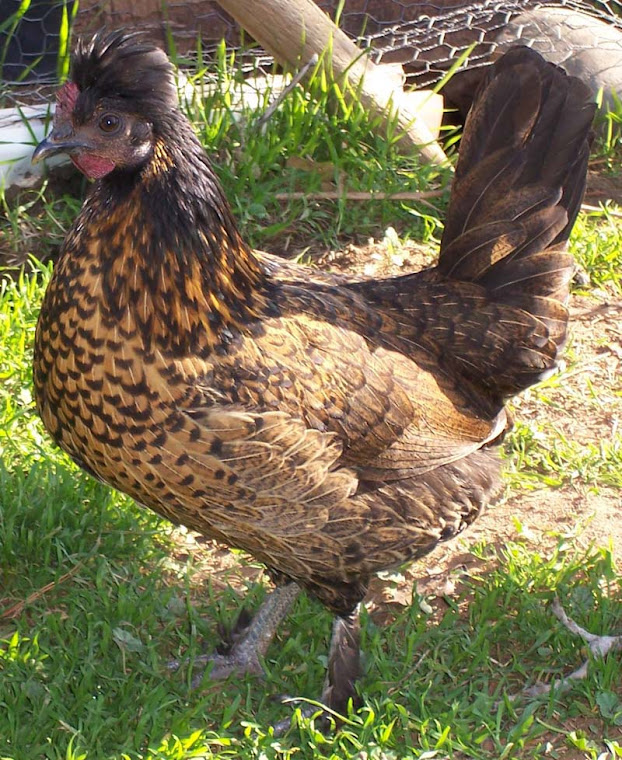One of the habits of peafowl that has surprised me is this cuckoo-bird tendency to sneak in while a broody hen is off the nest, and lay an egg among the rest. It doesn't make much sense on the face of it: unlike chickens, peahens will not linger on the nest to hatch out more eggs. Once the first round of chicks hatches--usually her own--she waits a day or so until they are able to walk tolerably well, and then abandons the nest without so much as a backward glance. Any remaining eggs are ignored, and unless another broody hen just happens to plop down on them, they chill and die.
Every year there have been leftover eggs in Pea's nest, and I've agonized over their fate. No accomodating peahen has ever moved in to save the day; not surprising as peahens tend to be territorial about their nest sites and very selective. I've tried sticking them under broody chickens; that endeavour was not well-received. Imagine, if you will, a bantam cochin hen teetering on top of a giant pea egg that weighs nearly a quarter what she does. The hen in question put up with that nonsense for about three days and then unceremoniously threw the egg out of the nest box. I've tried incubating them in an elderly, temperamental incubator given to us by a neighbor; that didn't work either. But this year, things are different.
Back in the beginning of June, I was gearing up for another try with our incubator. The little round beast had been purring on the kitchen table for several days, waiting for me to get my nerve up to put eggs in it. Now--thanks to Pea--I had eggs all right. But first I wanted to candle them, a feat made rather tricky by the fact that it was broad daylight. In the past I've used the old furnace closet, but that practice came to a screeching halt when a spider the size of a Volkswagen bus moved in there. As it is quite fat and happy, I have declined to kill it: whatever it's eating, I don't want in my house either. The spider can have the furnace closet. Instead, I have developed an alternative darkroom: my husband's very thick, dark blue terrycloth bathrobe. If you drape it over your head and shoulders, it blocks light quite well.
Kneeling beside the bed with the robe over my head and the eggs and flashlight in front of me, it didn't take long to confirm that all of the eggs were still alive. Two were about two-thirds of the way through their incubation; the other two were less than a week along. I made some quick notes on their shells in pencil, and placed them in the incubator. Then, feeling that I might as well take the plunge, I loaded the rest of the sections with chicken eggs.
A week later, when Pea's daughter appeared with her two chicks, I checked that nest and discovered five remaining eggs. One had gone so far as to pip. This one went straight into the incubator, and candling of the rest showed the same type of age distribution. In they went.
Fast-forward to today. The pipped egg hatched eight hours later, giving us a fine brown chick. Over the next several days three more hatched, two more browns and a white. Sadly, neither mother pea has shown any interest in adoption, so the chicks are being raised partly indoors and partly in the nursery, where a long-suffering Pea tolerates their tiny antics amidst her older, more dignified offspring. Also, as of yesterday the chicken eggs began hatching. We currently have eight hatched, two pipped, and ten sitting there looking uncooperative.
| Seven of eight. Two bantam cochin mixes, and five Easter Eggers. |



